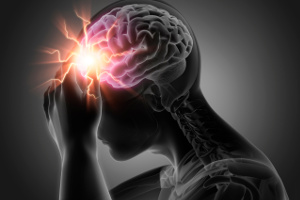Chronic headaches may be linked to iron deficiency anemia
 Chronic headaches, tension headaches, and migraines are common conditions that affect both quality of life and work capacity. Iron deficiency anemia is also widespread, particularly among women of childbearing age, children, adolescents, the elderly, vegetarians, and very active athletes. According to a meta-analysis published in Anemia, there appears to be a connection between anemia and various forms of chronic headaches. The researchers therefore recommend testing the hemoglobin levels of patients with chronic headaches and treating iron deficiency when present. However, iron supplements should only be taken when a deficiency is confirmed.
Chronic headaches, tension headaches, and migraines are common conditions that affect both quality of life and work capacity. Iron deficiency anemia is also widespread, particularly among women of childbearing age, children, adolescents, the elderly, vegetarians, and very active athletes. According to a meta-analysis published in Anemia, there appears to be a connection between anemia and various forms of chronic headaches. The researchers therefore recommend testing the hemoglobin levels of patients with chronic headaches and treating iron deficiency when present. However, iron supplements should only be taken when a deficiency is confirmed.
Anemia is a condition where hemoglobin levels in the blood are too low. Hemoglobin is the red pigment in blood that binds oxygen and delivers it to the body’s cells to produce energy. Since iron is an essential building block in hemoglobin, it plays a crucial role in maintaining healthy hemoglobin levels.
Iron deficiency is the most common cause of anemia, which can affect many systems in the body due to a lack of cellular energy. The central nervous system is especially vulnerable, often resulting in symptoms like fatigue and cognitive impairment. There is also evidence that iron deficiency anemia can lead to different types of chronic headaches, including tension headaches and migraines. These types of headaches not only reduce quality of life and work capacity but are also associated with enormous societal costs.
Moreover, treatment of chronic headaches with painkillers such as paracetamol, aspirin, or stronger NSAIDs like ibuprofen is associated with various side effects, including gastrointestinal bleeding. This can disrupt iron metabolism and worsen anemia. Since pain medications don’t address the root cause, the researchers behind the new study wanted to investigate the link between chronic headaches and iron deficiency anemia more closely.
High risk of chronic headache with iron deficiency anemia
The meta-analysis included 13 studies: five examined chronic headaches in patients with iron deficiency anemia, while eight looked at iron deficiency anemia in patients suffering from chronic headaches. The results showed the following:
- Among patients with iron deficiency anemia, 38% suffered from chronic headaches.
- Among patients with chronic headaches, 20% had iron deficiency anemia.
- Patients with anemia had a 76% higher risk of developing chronic headaches compared to individuals without anemia.
Based on their findings, the researchers recommend testing patients with chronic headaches for iron deficiency anemia. Treating iron deficiency and anemia may reduce the risk of developing chronic headaches and help alleviate symptoms. However, more studies are needed to better understand the effects of iron supplementation.
Iron sources and why iron deficiency is so widespread
The richest sources of iron are red or dark meats and organ meats. White meats, fish, and eggs are also good sources, as iron from animal products (heme iron) is more easily absorbed. Spinach, beets, beans, apricots, grains, nettles, and other plant-based foods contain non-heme iron, which is more difficult for the body to absorb.
Absorption requires vitamin C and sufficient stomach acid. Iron absorption is hindered by calcium from dairy and supplements, antacids, and antibiotics such as tetracyclines.
Iron deficiency is particularly common among women of reproductive age due to menstruation and other forms of blood loss. Rapid growth can cause iron deficiency in children and adolescents. Elderly people, small eaters, vegans, and vegetarians are at risk due to low iron intake and animal-based iron being more bioavailable. Highly active athletes may also experience iron deficiency due to their high oxygen turnover during performance.
You can be iron deficient without having anemia, which typically appears later as the deficiency worsens.
Iron requirements and supplementation
The recommended daily iron intake for adults is 9 mg, and menstruating women should aim for about 15 mg per day. Pregnant women are advised to take special iron supplements starting in the 10th week of pregnancy.
Generally, iron supplements should only be used when a deficiency has been confirmed by a blood test, as iron also catalyzes the formation of free radicals that can damage cells.
- Anemia is defined as hemoglobin levels below the normal range.
- Normal hemoglobin levels are 7.3 - 9.5 mmol/L for women and 8.3 - 10.5 mmol/L for men.
- There are several causes of anemia that must be considered in treatment.
Headaches and relevant supplements
Headaches, including tension headaches and migraines, can also be triggered by dehydration and nutrient deficiencies. Various dietary factors may also act as headache triggers.
References:
Shiwam Rohilla et al. The Bidirectional Relationship Between Iron Deficiency Anemia and Chronic Headache Disorders: A Systematic Review and Meta-Analysis. Anemia 2025
TIP! See also the related articles
Search for more information...
- Created on .








